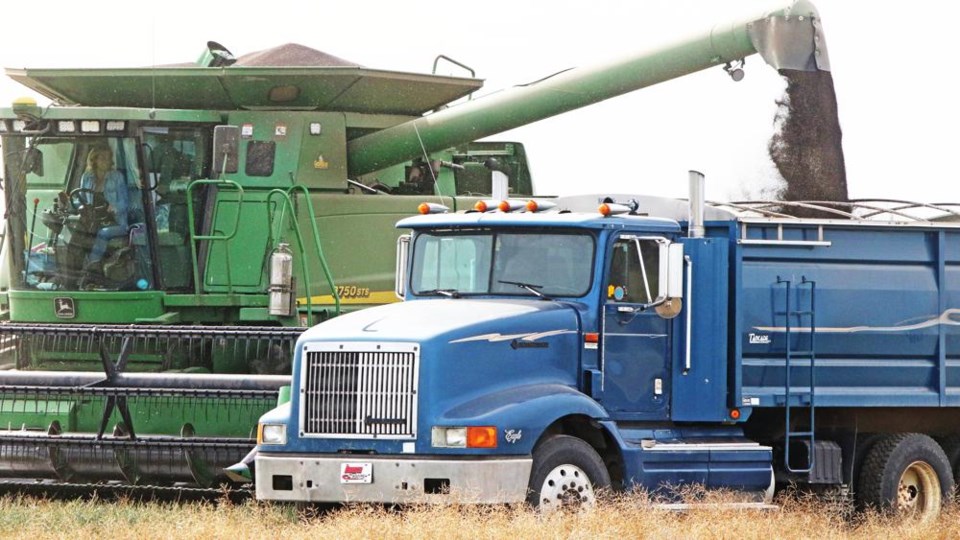Warm, dry fall weather has enabled great harvest progress to be made in southeast Saskatchewan, with 92 per cent of the crop now in the bins, up from 81 per cent the week before.
An additional four per cent of the crop is swathed or ready to be straight-cut. In the Weyburn area crop district (2A), harvest is 94 per cent done, and in the Radville-Lake Alma-Minton area (3ASE), it’s 99 per cent completed.
Provincially, the harvest is 89 per cent in the bin, with an additional seven per cent swathed or ready to be straight-cut. These crops are mainly canola and flax waiting to be harvested, along with some soybeans.
In the southeast region, flax is 68 per cent combined with eight per cent ready to straight-cut, and 23 per cent of the crop is still standing. Soybeans are 80 per cent combined with 10 per cent ready to straight combine, and for canola, 90 per cent is combined with six per cent ready to straight combine, and three per cent has been swathed.
For Creelman-Fillmore area farmer Marcel Van Staveren, he said the harvest operations on the farm with his two brothers had a “mirage” finish, as they await some hard frost to help their remaining crops be ready for finishing, as they finished up some soybean crops on Sept. 21.
“We have various patches of weeds-kochia and soybeans or some canola fields with kochia-green weeds to do. We need a few hard frost events to make those tough regions harvestable so the crops can be safely stored at lower moisture levels,” he said.
They began the fall perennial weed control spraying in fields on Wednesday, and he estimates this will take the next couple of weeks to complete.
“There were high fall grasshopper populations and very low subsoil moisture reserves. These both make 2022 prospects for high or average yields questionable,” said Van Staveren.
Meanwhile, he noted that grain prices are at record values. “Pulse crops, oilseeds and cereals are at best ever recorded values in the last 10 to 20 years,” he said.
In addition to the fall weed spraying, Van Staveren said they are also actively making some improvements to their farm land that will enable better farm equipment operations.
“We’re digging water reservoir dugout to increase the water supply for crop spraying and wildlife in future years,” he added.
There was very little rainfall in the southeast region again this week, with the Weyburn area getting the highest amount with 3 mm, and the Radville, Kisbey and Frobisher areas all getting 2 mm.
The dry weather has further depleted topsoil moisture conditions. Cropland topsoil moisture is rated as 34 per cent adequate, 53 per cent short and 13 per cent very short.
Hay and pasture land topsoil moisture is rated as 24 per cent adequate, 27 per cent short and 49 per cent very short. Farmers are hoping for rain to help improve moisture reserves for next spring.
Pasture conditions are rated as 21 per cent good, 24 per cent fair, 37 per cent poor and 18 per cent very poor. Rainfall late in the season allowed for some pastures to green up and improve their ability to support cattle grazing. Now the pastures are beginning to dry down again, and more rain will be needed before winter to help the grass recover.
The majority of crop damage this past week was due to wind, frost and lack of moisture. There was also damage caused by wildlife and waterfowl. Most crops have avoided frost damage by already being harvested, but some of the later-maturing crops such as corn and soybeans have seen some damage.



